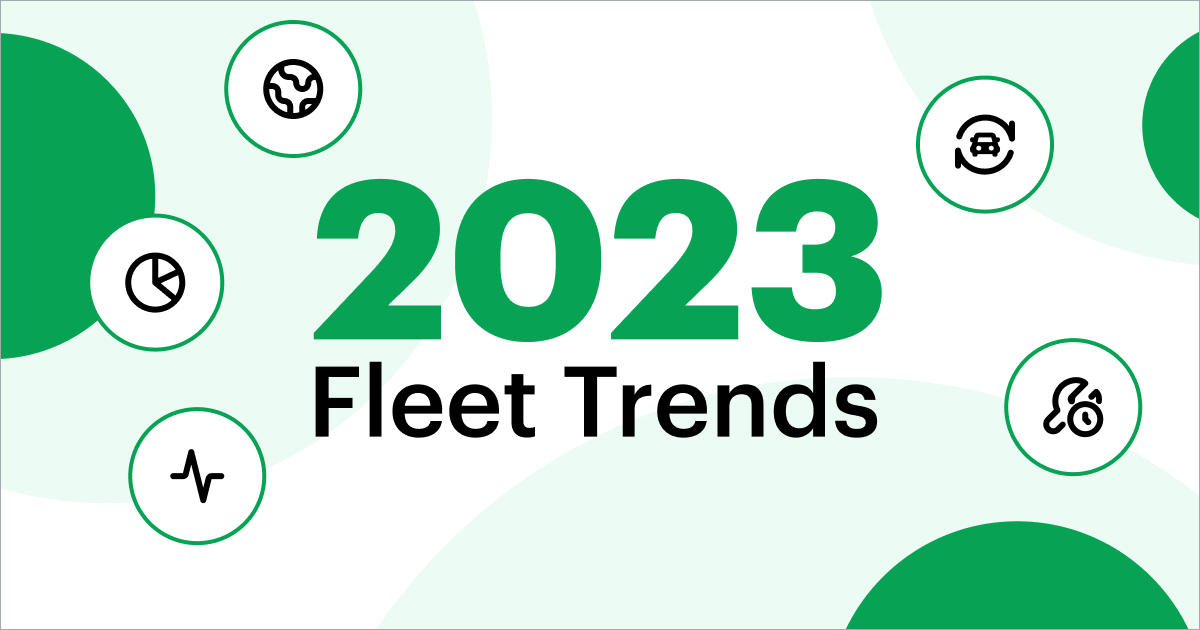The global spread of coronavirus (COVID-19) is a tragic occurrence causing uncertainty and many complications affecting business operations for fleets. In this post, we’ll explore some of those implications and how preparation can alleviate drawbacks.

The Implications of COVID-19 on Fleet Management
What began as an outbreak in China has transformed into a global pandemic. COVID-19’s massive effect has produced great uncertainty and required government action to mitigate.
Due to the viruses’ vast spread and lack of containment, its implications are disrupting our daily function. It has halted production, limited gatherings and shaken the global economy. It’s a dilemma that is influencing both the supply and demand in our macro environment.
The economic contraction can be felt by businesses almost immediately. When it comes to COVID-19 and fleet management, being preventive instead of reactive will reduce compounding issues and provide much-desired peace of mind.
For fleet managers, this is a time of uncertainty that requires solutions to provide clarity across operations, prudent safety precautions and a detailed understanding of expenses.
Supply Chain Constraints and Inventory Management
With a globally connected economy, COVID-19 has shaken the supply chain. Due to the halting of manufacturing output, the supply of goods has contracted tremendously.
According to a study by McKinsey, the trucking capacity to ship goods to the ports is operating only at 60 to 80 percent. Due to the limited supply conflicting with increasing demand for certain goods (food, cleaning supplies, etc.) freight rates are seeing significant short-term spikes.
These rate increases can be beneficial for fleets whose services are still functioning despite the virus. However, concerns still loom across the fleet industry regarding a decrease in work. Construction jobs might slow down due to potential clients tightening their budgets, and service fleets could potentially see halts due to demand.
There are also downsides to the supply chain constraint for many fleets. The importance of maintaining proper inventory levels is magnified. Necessary parts and tools are bound to experience shipping delays.
Your fleet’s assets require necessary preventive maintenance and if you service in-house, you must ensure you’re stocked with adequate parts to withstand potential lag in delivery.
To mitigate the risk of potential part stockouts, an inventory management system is a dependable solution. You’ll gain insight into all of your inventory levels and associated costs. You can create custom alerts to notify you when critical inventory levels are approaching to combat stockouts. This can be automated and managed from anywhere, a welcomed convenience in the event you’re working remotely.
Though you’ll typically want to avoid excess overstock, the impact of COVID-19 might present a more cost-effective approach by ordering sooner instead of paying a premium due to expedited shipping or lack of availability. It’s a risk that isn’t worth the opportunity loss due to vehicle downtime.
A Proactive Approach to Combat Unwanted Downtime
No matter which industry your fleet identifies with, there are parallels in functionality when it comes to mobile asset management. During this troubling time, business demand may temporarily slow.
To make the most of this unfortunate situation, embrace the opportunity to focus on efficiencies across your operation. Regardless of COVID-19’s impact, your assets are the lifeblood of your organization.
Your approach to fleet management must always be proactive and not reactive. This goes beyond maintenance and expense control and includes your preparations for your team during a crisis.
Any slowdown or break from everyday operations allows you the chance to assess maintenance needs and possibly conduct preventive maintenance ahead of schedule. When we return to somewhat normalcy, you’ll be prepared to send your fleet out knowing assets are functioning at peak performance.
How Fleets Can Prepare and Protect Employees
Safety and Precautions
Safety and risk mitigation are the foremost priorities for any fleet. Operating a vehicle is a dangerous task and the existential threat of COVID-19 only exacerbates it.
Sanitation and cleanliness are two safety measures that lead to sustainability and reduce unnecessary risks. The 5S system (sort, set in order, shine, standardize and sustain) is a best practice that applies to inventory and parts management, yet the same principles apply to a mobile asset. The goal is to encourage safety, efficiency and compliance simultaneously.
Adhering to the guidelines of The Occupational Safety and Health Administration (OSHA) is imperative and should be enforced at all times. Work environments must always minimize hazards and provide sanitary facilities to satisfy all worker’s needs.
If your operators must interact with a customer or vendor, ensure employees are stocked with the necessary equipment such as gloves, masks, sanitation wipes and other protective wear.
For construction and service fleets, workers on the jobsite should maintain the suggested distance of six feet away from fellow coworkers when possible. Not only will you remain in compliance, but you’ll be doing your part to prevent community spread.
Electronic driver vehicle inspection reports (eDVIR) are a compliance requirement for most fleets and are a great measure to get immediate status updates. They can be conveniently completed from a driver’s mobile device in a fraction of the time compared to paper. Additionally, the flow of information in real-time, so you receive updates instantly instead of waiting for a paper form to be hand-delivered.
Encourage good hygiene and ensure operators have the necessary sanitation supplies to disinfect their vehicles before and after use. This includes touch points like dashboards, controls, steering wheels, and handles. This should be included in their daily vehicle inspection reports. Standardizing this will help combat the spread of any virus now or in the future. Remember, the best defense is a good offense.
Transparent Communication
Another takeaway the situation has shed light on is the necessity to expedite the flow of information. As a fleet manager, you expect clear communication across your team when it comes to vehicle issues. The same level of transparency should be reciprocated to your crew.
Fleet management software and mobile apps are excellent solutions to encourage collaboration. Not only will each stakeholder have a voice, but issues can be easily tracked and necessary preventive action can be tasked out in real-time.
This extraordinary circumstance produces mass uncertainty, and fleet managers should be mindful of their operators and customers to set clear lines of communication regarding status updates of interest. Remaining informed will boost morale and ultimately lead to greater productivity.
Implementing Remote Fleet Management Practices
One of the most significant challenges fleets face is a solution to remain connected and encourage communication throughout the team. Although working from home might not be possible for drivers, working from anywhere is possible for most fleet managers and back-office staff.
However, bridging the gap between remote staff and operators can be virtually impossible if you’re still using paper processes, whiteboards or antiquated software to manage opertions.
The flexibility to manage a fleet remotely, access your fleet data anywhere and interact with staff that might be working from home are other considerations for cloud-based fleet management software.
A manager can’t be everywhere at once, but technology can make it a near reality. In the event of lost staff or headcount reduction, fleet management software and its solutions effectively fill that void with less human capital.
This is a tremendous benefit for fleet managers who have to juggle many tasks to monitor mobile assets that are always on the road or across various locations. You’ll gain the necessary visibility into the status of assets without physically being there.
A cloud-based system only requires log-in credentials, so you aren’t tied to an office desktop computer and can access your fleet dashboard from anywhere. During a time of social-distancing and working from home, this is extremely advantageous.
Downtime is out of the question. Pandemic or not, you can’t risk having a vehicle down and not fulfilling commitments. Using software and telematics devices, you’ll be able to pinpoint vehicle concerns and take the necessary action to address them in real-time. Being proactive will help you avoid compounding issues.
Cost Inefficiencies
Cost inefficiencies can cripple an organization. The circumstances we face are a grim reminder of the importance of monitoring operating expenses.
A short-term slowdown might deflate expenses like fuel and tolls, though maintenance costs could increase as service is preempted and demand increases. Focusing on preventive maintenance in the event of downtime related to COVID-19 will empower your team and enhance productivity once the situation improves.
If you outsource maintenance, shops might experience limited service hours, therefore acting with urgency is best to ensure your vehicles receive the proper attention. Keep in mind, service vendors are considered an essential business and should remain open during a mandated business shutdown.
It’s imperative that you drill down into expenses at a granular level to truly assess the impact of COVID-19. One solution is determining your vehicle’s true total cost of ownership (TCO). TCO aggregates both variable (fuel, tolls and maintenance) and fixed (depreciation, taxes, registration and fees) operating costs.
Costs can be broken down per asset and even to the cost per mile level. Compare the trend over the last year with the costs you’re seeing now. You can leverage these results to forecast expenses and make necessary decisions. Running a lean operation is essential to maximizing resources and avoiding unnecessary expenses during this time.
Asset Utilization
Knowing how your assets are utilized is a fleet management component you can monitor even while working remotely. When managing a fleet, this imperative insight is easily overlooked. A slowdown for some fleets might result in max capacity for others. Knowing how demand can affect your fleet’s utilization is crucial, but how can fleet managers determine utilization?
Telematics devices provide real-time updates on vehicle and equipment details such as odometer readings. Pairing a telematics device with fleet management software gives you visibility into the mileage or hours an asset is in operation per day. Conversely, drivers can provide odometer updates from anywhere using mobile apps.
Evaluating mileage usage trends will give you a better understanding of your asset utilization, and if there’s a need to consider optimizing routes, downsizing or expanding your fleet.
It's more important than ever for your customers to trust you and your brand. Your service must be reliable, on time and fully delivered. Fleetio provides you with the tools you need to ensure that happens.
This too shall pass, but your fleet must always be prepared. See how Fleetio can help your fleet maximize efficiency, keep your team safe and ensure strong communication. Start your free trial or request a demo today!




